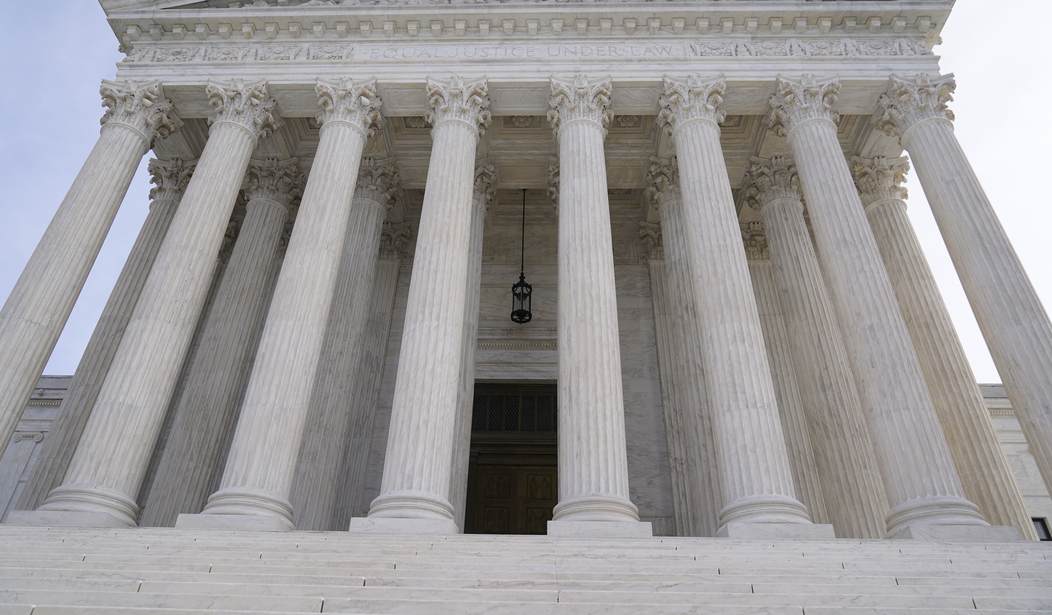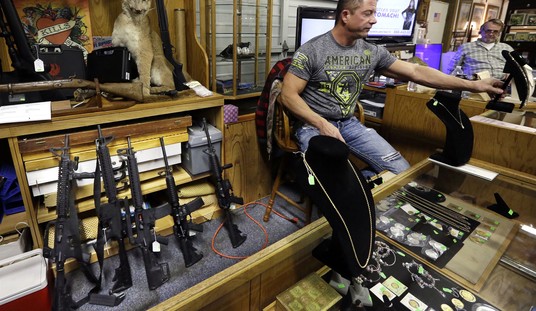The Supreme Court only has one case left to decide from its November session: New York State Rifle & Pistol Association v. Bruen. We’re going to have to wait at least another week (and likely longer) for the Court to issue its opinion, however, after today’s opinions were released with nary a mention of the New York carry case.
In fact, none of the high profile cases pending before the Court were decided today. Besides Bruen, the Court remains silent on cases dealing with abortion, Texas’ new social media law, immigration, and environmental law. Just two opinions were released today, and while no case that gets to the Court can fairly be called a “minor issue,” I think it’s fair to say that there aren’t going to be a ton of people talking around the office water cooler about Morgan v. Sundance or Shinn v. Martinez Ramirez
The Bruen case is expected to be one of the last released by the Supreme Court before the end of this term in late June, but that’s based more on the Court’s unofficial tradition of saving what are expected to be the biggest and most controversial cases until they’re getting ready to leave D.C. for their summer vacation. There’s nothing preventing the court from releasing Bruen before then, however, and there’s a lot of anticipation building around the case. It’s anecdotal, to be sure, but in the live chat hosted by SCOTUSBlog covering this morning’s orders and opinions there was as much discussion about Bruen as there was about the Dobbs case that is expected to overturn Roe v. Wade.
So what do we know about what the Bruen opinion might say? Not much, to be honest, though there is an expectation that the Court will side with the plaintiffs in the case. SCOTUSBlog’s Amy Howe noted during this morning’s live chat that there are only two justices who haven’t written any opinions from the November session, and both of them lie squarely within the Court’s conservative wing: Clarence Thomas and Amy Coney Barrett.
Thomas did not write the majority opinion in the 2008 landmark case that overturned Washington, D.C.’s ban on handguns and made it clear that the Second Amendment protects an individual right to keep and bear arms, nor was he the author of the majority opinion in 2010’s McDonald v. Chicago that declared the Second Amendment’s protections apply to all levels of government, not just the federal government. Justice Antonin Scalia authored Heller, while Justice Samuel Alito penned the majority opinion in McDonald. It’s entirely possible that Barrett gets the nod in the Bruen case, though most Court-watchers expect that this time around it will be Thomas’ turn to author a majority opinion upholding the right of average, everyday citizens to bear arms in self-defense.
I tend to agree, though it’s all pure speculation at this point. Unlike Dobbs, no draft decision in Bruen has leaked out to give us an idea of who will be the author of the majority opinion and how far justices might go in overturning New York’s “may issue” carry laws. The question posed by the Court was fairly narrow and directed solely at the two named plaintiffs in the case, who were granted “restricted” carry permits that did not allow them to carry a gun for self-defense in most of the state. The Court could decide the case so narrowly that it has little bearing on the vast majority of New Yorkers hoping to exercise their right to bear arms, though several justices (including Thomas) appeared ready to talk about the right to bear arms more broadly when questioning New York Solicitor General Barbara Underwood during oral arguments last November.
Justice Clarence Thomas questioned where New York draws the line between higher- and lower-density areas. “How rural,” he asked, “does the area have to be before your restrictions shouldn’t apply?” When Underwood responded that there isn’t a cutoff, but that unrestricted licenses are “much more readily available” in less densely populated areas, Thomas retorted that one of the challengers, Robert Nash, “lives in quite a low-density area.”
Justice Samuel Alito probed New York’s requirement that an applicant for an unrestricted concealed-carry license show a “non-speculative,” as Underwood put it, need to defend himself. Alito described workers in Manhattan – nurses, dishwashers, orderlies, doormen – who don’t have criminal records, but do have to take public transportation and then walk to their homes late at night “through a high-crime area.” Even if there have been a lot of muggings in their neighborhoods, Alito said, they would not be able to get a concealed-carry license under the current regime. How, he asked, “is that consistent with the core right to self-defense, which is protected by the Second Amendment?”
Kavanaugh followed up with a similar question. “Why,” he asked Underwood, “isn’t it good enough to say I live in a violent area and I want to be able to defend myself?”
Underwood’s response – that an applicant’s claims “are examined by a licensing officer,” who can presumably consider an applicant’s entire situation – prompted Kavanaugh to voice another concern. If the official who determines whether to issue the license has discretion in making that decision, Kavanaugh suggested, “that seems inconsistent with an objective constitutional right.”
Beyond Bruen, the Court has several other Second Amendment-related cases that it’s currently considering in conference or has placed on hold pending the decision in the New York carry case. Bianchi v. Frosh, which is a challenge to Maryland’s ban on so-called assault weapons, was scheduled to be heard in conference last Friday, and Duncan v. Bonta, which takes on California’s ban on “large capacity” magazines, is scheduled to be heard at the Court’s next conference coming up this Friday. Association of New Jersey Rifle & Pistol Clubs v. Platkin, which is another magazine ban case, and the open carry case known as Young v. Hawaii are also on hold, likely pending the decision in Bruen.
Whenever that decision comes, it won’t be the last word in Second Amendment jurisprudence. We know that New York, California, New Jersey, and other “may issue” states are going to continue to make it as hard as possible for law-abiding Americans to exercise their right to keep and bear arms in self-defense, and that means our fight to secure that right in the courts, Congress, and state legislatures will continue as well. At the moment, though, I’m cautiously optimistic that Bruen will have an immediate and positive impact on our ability to keep and bear commonly-owned firearms for lawful purposes… even beyond the issues that are specific to the New York carry case.









Join the conversation as a VIP Member